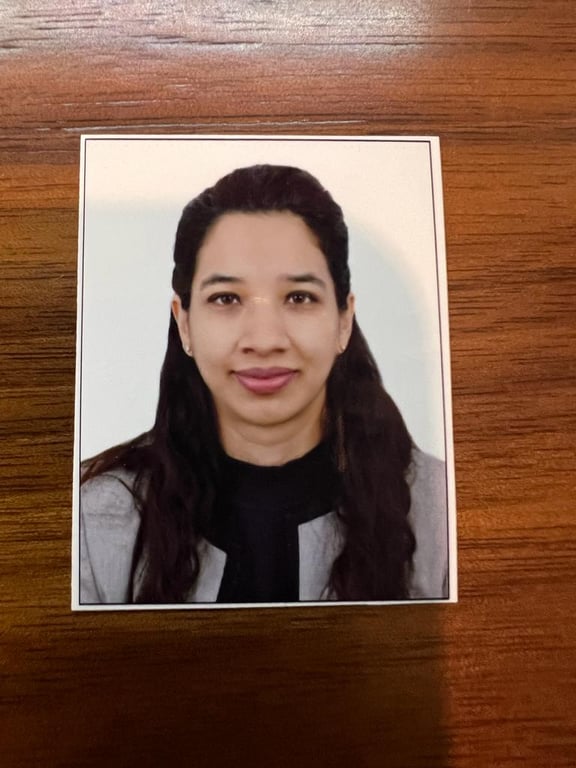About
The course teaches students comprehensive and specialised subjects in entrepreneurial leadership and management for various business situations; it develops skills in critical thinking and strategic planning for changing and fast-paced environments, including financial and operational analysis; and it develops competences in leadership, including autonomous decision-making, and communication with employees, stakeholders, and other members of a business. These generalized MBA insights are firmly rooted in a curriculum focused on innovation, social entrepreneurship, finance, and technology. Specialised MBA programmes aims to refine the expertise in the specific field.
Target Audience
Ages 19-30, 31-65, 65+
Target Group
The course is suited for executives and general business managers in organisations of all sizes and types, or for those who will soon move into such management positions. It is designed for those that will have responsibility for planning, organising, and directing business operations. Some of the specific pathways will have associated audiences.
For example the MBA in International Business is suited for executives and general business managers, or aspirants to these roles, who work in organisations with global reach and need to enhance their understandings of internationalisation and cross-cultural aspects of work and business.
Similarly, the MBA in Technology Leadership is suited for business leaders at the forefront of digital and technological transformation in their organisations.
In all cases, the target group should be prepared to pursue substantial academic studies fitting to the MQF level.
Mode of attendance
Full-Time and Part-Time
Structure of the programme
Please note that this structure may be subject to change based on faculty expertise and evolving academic best practices. This flexibility ensures we can provide the most up-to-date and effective learning experience for our students.
Full-Time: 50 Weeks, 1 Year, or 3 Semesters (2250 hrs at ~45 hrs/week)
Semester I (~17 weeks): Tier One Foundational modules (30 ECTS, 750 hrs) result in 1 semester of coursework (~45 hrs/week)
Semester II (~17 weeks): Tier Two Specialisation modules (30 ECTS, 750 hrs) result in 1 semester of coursework (~45 hrs/week)
Semester III (~17 weeks): Tier Three Capstone module (30 ECTS, 750 hours) results in 1 semester of coursework (~45 hrs/week)
Part-Time: Up to 250 Weeks, 5 Years, or 15 Semesters (2250 hrs at <9 hrs/week)
Semester I (~17 weeks): Tier One Foundational module (3 ECTS, 75 hrs) at ~4.5 hrs/week
Semester II (~17 weeks): Tier One Foundational module (3 ECTS, 75 hrs) at ~4.5 hrs/week
Semester III (~17 weeks): Tier One Foundational module (3 ECTS, 75 hrs) at ~4.5 hrs/week
Semester IV (~17 weeks): Tier One Foundational module (3 ECTS, 75 hrs) at ~4.5 hrs/week
Semester V (~17 weeks): Tier One Foundational module (3 ECTS, 75 hrs) at ~4.5 hrs/week
Semester VI (~17 weeks): Tier One Foundational module (3 ECTS, 75 hrs) at ~4.5 hrs/week
Semester VII (~17 weeks): Tier One Foundational module (3 ECTS, 75 hrs) at ~4.5 hrs/week
Semester VIII (~17 weeks): Tier One Foundational module (3 ECTS, 75 hrs) at ~4.5 hrs/week
Semester IX (~17 weeks): Tier One Foundational module (3 ECTS, 75 hrs) at ~4.5 hrs/week
Semester X (~17 weeks): Tier One Foundational module (3 ECTS, 75 hrs) at ~4.5 hrs/week
Semester XII (~17 weeks): Tier Two Specialisation module (10 ECTS, 250 hrs) at ~15 hrs/week
Semester XIII (~17 weeks): Tier Two Specialisation module (10 ECTS, 250 hrs) at ~15 hrs/week
Semester XIV (~17 weeks): Tier Two Specialisation module (10 ECTS, 250 hrs) at ~15 hrs/week
Semester XV (~17 weeks): Tier Three Capstone module (30 ECTS, 750 hours) at ~45 hrs/week
Grading System - Scale: 0-100 points - Components: 60% of the mark derives from the average of the assignments, and 40% of the mark derives from the cumulative examination - Passing requirement: minimum of 60% overall
Dates of Next Intake - Rolling admission
Pass rates - 2023 pass rates will be publicised in the next cycle, contingent upon ensuring sufficient student data for anonymization.
Identity Malta’s VISA requirement for third country nationals: https://www.identitymalta.com/unit/central-visa-unit/
How students have found success through Woolf
Course Structure
About
Description
Founders will refine their leadership and strategic thinking skills to identify opportunities, formulate strategic hypotheses/bets, and implement strategies with a clear and actionable plan.
Key Learning Outcomes
Evaluate and enhance leadership skills that lead the business to adapt and thrive
Develop strategic and critical thinking skills, identify opportunities, anticipate challenges, and drive sustainable business growth
Differentiate between “good and bad” strategies, formulate strategic hypotheses/bets, and implement strategies with a clear and actionable plan
Teachers





Intended learning outcomes
- Key strategies for effective delegation.
- Why improvements in the general strategy and techniques of managing people can produce outcomes more significant than isolated improvements to employee performance
- The relevance of theories of management and concepts of delegation and performance tracking.
- Select topics for the advanced management of human resources.
- Critical knowledge of business leadership strategy.
- Creatively apply the theories learned in the module to develop critical and original solutions for the challenges of business leadership and strategy including: • Assessing the resources of a team to show how those resources could be used to achieve business outcomes. • Assessing the performance of a team to show whether they are on track to meet business goals.
- Communicate an in-depth domain-specific knowledge and understanding to business leadership and strategy.
- Autonomously gather material and organise it into a coherent, comprehensive presentation.
- Employ the standard modern conventions for the presentation of scholarly work and scholarly referencing.
- Act autonomously in identifying research problems and solutions related to business leadership and strategy.
- Apply a professional and scholarly approach to research problems pertaining to the effective use of team resources and delegation of personnel.
- Create synthetic contextualised discussions of key issues related to leadership and management strategy.
- Efficiently manage interdisciplinary issues that arise when assessing human resources and delegating effectively to achieve business goals.
- Demonstrate self-direction in research and originality in solutions for management and leadership.
- Solve problems and be prepared to take leadership decisions related to business leadership and strategy.
About
Description
Use data to deepen your understanding of customer behaviors and make decisions based on evidence when addressing difficult challenges.
Key Learning Outcomes
Understand how to trade-off among data, speed, and risk when making decisions
Use data and insights to evaluate options and trade-offs
Elevate thinking processes to incrementally improve decision qualities
Build confidence in making and communicating decisions, cultivating self-trust and decisiveness as an entrepreneur
Teachers





Intended learning outcomes
- The foundations of probability and statistics to the extent required for a manager to interpret large quantities of data and to make informed decisions under conditions of uncertainty.
- The relevance of theories for business applications in the domain of evidence-based decision-making.
- Key theoretical topics pertaining to evidence-based decision-making such as decision trees, hypothesis testing, multiple regression, and sampling.
- Select topics for the advanced management of data-driven insights into customer behaviour.
- Diverse scholarly views on evidence-based decision-making in a business context.
- Autonomously gather evidence and organise it into a coherent, comprehensive presentation advocating an evidence-based decision.
- Apply an in-depth domain-specific knowledge and understanding to evidence-based decision-making in a business context.
- Employ the standard modern conventions for the presentation of scholarly work and scholarly referencing.
- Creatively apply the theories learned in the module to develop critical and original solutions for the challenges of evidence-based decision-making in a business context.
- Create synthetic contextualised discussions of key issues related to evidence-based decision-making.
- Demonstrate self-direction in gathering and using evidence and data for decision-making.
- Efficiently manage interdisciplinary and diverse kinds of evidence that inform decision-making.
- Solve problems and be prepared to take leadership decisions related to evidence-based decision-making in a business context.
- Apply a professional and scholarly approach to data and evidence as factors in decision-making.
- Act autonomously in identifying research problems and solutions related to evidence-based decision-making in a business context.
About
Description
In this course students will deepen and extend their ability to create and maintain high-quality relationships with people who come from a wide range of backgrounds and possess different points of view in order to create and execute processes that produce successful outcomes and results.
This course teaches business managers and leaders to reflect critically on concepts from the behavioural sciences that can be applied to a fast changing business environment to improve their abilities to lead and manage in organisations.
Behavioural frameworks for individuals, teams, and organisations are evaluated critically and discussed in the context of real-world cases. Tutorial groups provide practice in problem-based teamwork, communicating in specialist and non-specialist registers, and in applying the frameworks in practice.
Key Learning Outcomes
Understands the importance of relationships in business and how these can produce successful outcomes and results
Can develop relationships with people who come from a wide range of backgrounds
Can develop business relationships both in a personal/individual sense and also between companies
Understands strategies for using business relationships to generate successful outcomes
Knows a variety of behavioural frameworks for individuals, teams, and organisations to improve business relationships
Understands a variety of relationship theories for business
Understands ethical considerations of business relationships
Can communicate with people form a wide range of backgrounds and with different points of view to develop business relationships that are successful
Teachers





Intended learning outcomes
About
Description
Apply various creative problem-solving techniques to generate innovative solutions for complex business issues and drive business growth.
Key Learning Outcomes
Articulate the principles of creativity and innovation, identifying how they can be applied to solve real-world business challenges.
Apply various creative problem-solving techniques to generate innovative solutions for complex business issues.
Develop strategies that leverage innovation to drive business growth, focusing on sustainable and scalable business models.
Teachers





Intended learning outcomes
- Key strategies, including templates, that foster creativity, and innovation in business.
- Theories of innovation for real business applications.
- Topics and theories for the advanced management of business creativity and innovation.
- Critical knowledge of business creativity and innovation.
- Diverse scholarly views on the role of creativity and innovation in a business, and the methods of cultivating it -including diversity of personnel, and the role of co-creation in innovation.
- Autonomously gather material and organise it into a coherent, comprehensive presentation on the role of innovation in business and key strategies for cultivating it.
- Creatively apply the theories learned in the module to develop critical and original solutions for the challenges of business creativity and innovation.
- Employ the standard modern conventions in presentations of scholarly work and scholarly referencing in discussions of business innovation.
- Apply in-depth domain-specific knowledge and understanding to business creativity and innovation.
- a) Create synthetic contextualised discussions of key issues related to creativity and innovation in the workplace.
- Solve problems and be prepared to take leadership decisions related to business creativity and innovation.
- Act autonomously in identifying research problems and solutions related to business creativity and innovation.
- Demonstrate self-direction in research and originality in solutions developed.
- b) Apply a professional and scholarly approach to research problems pertaining to creativity and innovation.
- Efficiently manage interdisciplinary aspects of assessing templates and plans for cultivating creativity and innovation.
About
Description
Craft authentic vision & mission statements and a list of core values that resonate with customers and reflect your ethical stance.
Key Learning Outcome
Craft authentic vision & mission statements and a list of core values that resonate with stakeholders and reflect the founder’s ethical stance.
Explain how vision, mission, and values align with: your business’s ethics, your personal purpose, and your business’s objectives and strategies.
Critically assess the implications of key business decisions with ethical considerations, including the potential impact on stakeholders in short, medium, and long-term horizons.
Teachers





Intended learning outcomes
- The application of core elements of effective ethical and socially responsible management and leadership.
- The critical integration of ethical decision-making tools into their decision-making process in the workplace.
- Self-reflection upon, evaluation of, and improvement of their own practices as individuals, employees/managers, and consumers.
- Diagnose sources of organisational ethical culture and deviant behaviour.
- Design ethical programmes designed to accomplish specific objectives in organisations.
- Identify and evaluate key ethical and CSR issues related to different sectors of activity & different functions.
- Analyse ethical issues and they apply to management.
- Propose solutions to business problems in a global environment.
- Identify and analyse the implications of social and ethical issues in a business context.
- Implement both personally and organisationally key theories relating to personal, organisational, and societal ethics and values.
- Identify and solve ethical business problems.
- Recognise and critically assess cross-cultural variations and similarities in organisational practices in corporate social responsibility and business ethics.
- Apply knowledge of the diverse demographics of business to make effective ethical business decisions.
About
Description
The role of marketing management in organisations is to identify and measure the needs and wants of consumers, to determine which targets the business can serve, to decide on the appropriate offerings to serve these markets, and to determine the optimal methods of pricing, promoting, and distributing the firm’s offerings. Successful organisations are those that integrate the objectives and resources of the organisation with the needs and opportunities of the marketplace. The goal of this module is to facilitate student achievement of these goals regardless of career path.
This module addresses how to design and implement the best combination of marketing efforts to carry out a firm's strategy in its target markets. Specifically, this module helps to develop the student's understanding of how the firm can benefit by creating and delivering value to its customers, and stakeholders, and develop skills in applying the analytical concepts and tools of marketing to such decisions as segmentation and targeting, branding, pricing, distribution, and promotion.
Key Learning Outcomes
Critically analyse the tasks of marketing and examine the major functions that comprise the marketing task in organisations.
Assess market potential.
Classify and analyse customer segments, to develop effective marketing strategy.
Teachers





Intended learning outcomes
- The role of channels, channel partners, and other intermediaries in delivering products, services, and information to customers.
- Factors determining selection of which businesses and segments to compete in.
- Strategic issues facing today's managers in a dynamic competitive environment.
- Allocate resources across businesses, segments, and elements of the marketing mix.
- Apply marketing concepts to real-life marketing situations.
- Formulate and implement marketing strategies for brands and businesses.
- Make and defend marketing decisions in the context of real-world problem situations with incomplete information.
- Make cross-functional connections between marketing and other business areas.
- Classify and analyse customer segments, to develop effective marketing strategy.
- Assess market potential.
- Critically analyse the tasks of marketing and examine the major functions that comprise the marketing task in organisations.
About
Description
This module explores basic economic principles (theories and applications) that are relevant to a variety of businesses. The module emphasises an economist's mindset and amassing the tools necessary to do so, including the study of microeconomics and macroeconomics.
Throughout the module, students will examine the underlying economics of successful business strategy: the strategic imperatives of competitive markets, the sources and dynamics of competitive advantage, managing competitive interactions, and the organisational implementation of business strategy.
Additionally, the module focuses on case discussion and analysis and provides a foundation for consultants, managers, and corporate finance generalists.
Key Learning Outcomes
Research the determinants of market demand and supply in a given industry.
Have the autonomy to recognise and describe the different strategic goals for firms managing in competitive and monopolistic environments.
Demonstrates the ability to respond to fast-changing market conditions with actionable proposals for strategic firm behaviour including game theory, entry and deterrence, collusion and cooperation, and bargaining.
Teachers





Intended learning outcomes
- Select topics in the strategic deployment of Information, auctions, and incentives.
- Has a comprehensive knowledge of the business cycle beyond that associated with general studies.
- Has specialised knowledge of techniques for production and cost analysis.
- Analyse and take leadership decisions in a fast-changing environment about monetary policy and the supply and demand for money.
- Analyse and communicate the relevance of gross domestic product and its components for a given market.
- Performs critical evaluations of business environments in order to model relevant markets.
- Have the autonomy to recognise and describe the different strategic goals for firms managing in competitive and monopolistic environments.
- Demonstrates the ability to respond to fast-changing market conditions with actionable proposals for strategic firm behaviour including game theory, entry and deterrence, collusion and cooperation, and bargaining.
- Research the determinants of market demand and supply in a given industry.
About
Description
This module enables students to develop the skills and concepts needed to ensure the ongoing contribution of a firm's operations to its competitive position. It helps them to understand the complex processes underlying the development and manufacture of products as well as the creation and delivery of services. Throughout the module, students will receive a comprehensive overview of technology utilisation to drive a competitive advantage for company operations. Students explore various technology solutions for business process automation, including value proposition analysis across organisation functions.
Specific topics addressed include process analysis; cross-functional and cross-firm integration; product development; information technology; and technology and operations strategy.
Additionally, students will analyse how technology can be leveraged to improve product development during the four lifecycle phases. The module provides a detailed overview of the impact of technology on various operating models such as manufacturing, supply chain management, customer-facing, product development, and support functions.
Key Learning Outcomes
Evaluate how technology-savvy human capital drives technology adoption in operations management.
Develop a phased approach and methodology for embedding technology solutions across the operation, triggered by business value proposition and priorities.
Understand and assess contemporary operations and manufacturing organisational approaches and supply-chain management activities and the renewed importance of this aspect of organisational strategy.
Teachers





Intended learning outcomes
- Quality management practice in organisations and how total quality management and six-sigma facilitate organisational effectiveness.
- Market and product research relevant to technology-based businesses.
- The importance of an effective production and operations strategy to an organisation.
- Assess technology architecture and infrastructure capabilities depending on various operating models.
- Assess the value proposition, including cost reduction and revenue generation, of integrating technology across operation functions.
- Make product and service design decisions that impact other design decisions and operations.
- Develop a phased approach and methodology for embedding technology solutions across the operation, triggered by business value proposition and priorities.
- Evaluate how technology-savvy human capital drives technology adoption in operations management.
- Understand and assess contemporary operations and manufacturing organisational approaches and supply-chain management activities and the renewed importance of this aspect of organisational strategy.
About
Description
In general terms, financial accounting is the measurement of economic activity for decision-making. Financial statements are a key product of this measurement process and an important component of firms’ financial reporting activities.
The objective of this module is to help students become intelligent readers of the financial reports of most publicly traded companies. Students will learn the development, analysis, and use of these reports by focusing on what these reports contain, what assumptions and concepts accountants use to prepare them, and why they use those assumptions and concepts. A solid understanding of the fundamentals covered in this module should enable students to do well in more advanced finance and accounting courses and to interview intelligently for jobs in finance, consulting, and general management.
The module begins with the basic concepts of accounting. Students will analyse the main financial statements: balance sheet, income statement, statement of cash flows, and statement of stockholders’ equity. Particular attention is paid to how these four statements relate to each other and how they provide information about the operating performance and financial health of a company. The module also covers specific items from the financial statements and applies tools of analysis whenever possible.
Key Learning Outcomes
Understand, interpret, and describe how business activities are captured by financial statements
Makes judgments in assessing how a given financial statement analysis is tied to valuation.
Assess and analyse companies’ strategic engagement in earnings management activities.
Teachers





Intended learning outcomes
- Specialised knowledge of factors determining when to capitalise or expense.
- Select topics related to assets, liabilities, and equities.
- Critical knowledge of the relationship between cash and accrual accounting.
- Varying scholarly views on when to set an allowance using a balance sheet or income statement approach.
- Prepare simple financial statements and explain their significance to internal and external audiences.
- Interpret balance sheets, income statements, and statement cash flows.
- Prepare simple journal entries, ledgers, trial balances, and end-of-period adjusting entries.
- Apply ratio analysis to companies in different industries and perform a critical assessment of their performance based on limited or incomplete information.
- Identify issues related to revenue recognition.
- Explain how components of financial statements are linked together.
- Understand, interpret, and describe how business activities are captured by financial statements.
- Assess and analyse companies’ strategic engagement in earnings management activities.
- Makes judgments in assessing how a given financial statement analysis is tied to valuation.
About
Description
This module will approach leadership by identifying practices that researchers and practitioners have shown to be the most effective. Through these processes, students will gain a broad range of skills.
This module examines how leaders can most effectively use the resources of their team members to achieve business outcomes. The module develops managerial and leadership competencies, focusing on how key improvements in the general strategy and techniques of managing people can produce outcomes more significant than isolated improvements to employee performance. The module provides students with concepts to support them across their careers as they continue to develop effective delegation, management strategy, and engagement with people inside of an organisation.
Specific topics covered include managing a diverse workforce; self-leadership; perception pitfalls; decision making; conflict resolution; emotional intelligence; improving performance; team structure.
Key Learning Outcomes
Apply a professional and scholarly approach to research problems pertaining to the effective use of team resources and delegation of personnel.
Efficiently manage interdisciplinary issues that arise when assessing human resources and delegating effectively to achieve business goals.
Demonstrate self-direction in research and originality in solutions for management and leadership problems.
Teachers





Intended learning outcomes
- Analyse and assess theories of management and concepts of delegation and performance tracking.
- Critical knowledge of business leadership strategy.
- Strategies for improving general strategy and techniques of managing people to produce outcomes more significant than isolated improvements to employee performance.
- Specialised knowledge of key strategies for effective delegation.
- Select topics for the advanced management of human resources.
- Communicate an in-depth domain-specific knowledge and understanding of business leadership and strategy.
- Employ the standard modern conventions for the presentation of scholarly work and scholarly referencing.
- Creatively apply the theories learned in the module to develop critical and original solutions for the challenges of business leadership and strategy including: Assessing the resources of a team to show how those resources could be used to achieve business outcomes; assessing the performance of a team to show whether they are on track to meet business goals.
- Autonomously gather material and organise it into a coherent, comprehensive presentation.
- Identifying research problems and solutions related to business leadership and strategy.
- Solve problems and be prepared to take leadership decisions related to business leadership and strategy.
- Demonstrate self-direction in research and originality in solutions for management and leadership problems.
- Create critical and contextualised understandings and discussions of key issues related to leadership and management.
- Apply a professional and scholarly approach to research problems pertaining to the effective use of team resources and delegation of personnel.
- Efficiently manage interdisciplinary issues that arise when assessing human resources and delegating effectively to achieve business goals.
About
Description
This course examines iterative product development as a method for improving customer adoption and retention. Students will gain a mastery of iterative product development as a strategy for (a) transforming market research into potential solutions, (b) testing hypotheses about product improvements, and (c) gaining validation for product adjustments.
Students will gain a comprehensive understanding of the concept of a minimum viable product, how to test the market in the early stages of product adoption, and the benefits and weaknesses of incremental product improvements.
The purchase of outside materials is required.
Key Learning Outcomes
Can credibly lead discussions around new product adoption
Understands how to measure and make data-driven decisions around product adoption
Can articulate product improvements with product adoption metrics
Understands how to drive adoption while avoiding churn
Can lead customers from adoption to optimisation
Understands and can apply techniques for customer segmentation and cohort retention analysis
Can use innovation to improve market response
Teachers





Intended learning outcomes
- Theories for product measurement and adoption.
- Customer segmentation and cohort analysis.
- Key strategies for reducing churn and increasing user adoption.
- Select topics for the advanced management of product adoption and post-adoption optimisation.
- Diverse scholarly views on the role of measurement in product adoption.
- Autonomously gather material and organise it into a coherent, comprehensive presentation on measurement and product adoption.
- Apply an in-depth domain-specific knowledge and understanding to customer segmentation and cohort retention analysis.
- Creatively apply the theories learned in the module to develop critical and original solutions for product measurement in order to drive adoption outcomes.
- Employ the standard modern conventions for the presentation of scholarly work and scholarly referencing.
- Act autonomously in identifying research problems and solutions related to product adoption.
- Efficiently manage interdisciplinary issues that arise in connection product improvements and product adoption.
- Demonstrate self-direction in research and originality in solutions related to increasing and maintaining product adoption while avoiding churn.
- Solve problems and be prepared to take leadership decisions related to measuring product adoption.
- Create synthetic contextualised discussions of key issues related to product adoption.
- Apply a professional and scholarly approach to research problems of measurement and data-driven decision-making pertaining to product adoption.
About
Description
Put simply, the Implementation and product introduction module will help founders prove that there is a market ready to buy their product. Founders will learn modern methods to validate demand ahead of a more aggressive stage of investment in product development in the following module.
The approach will be to develop a proxy-product - or landing page, which will showcase the founder’s product, value proposition and brand. Each landing page will be subject to a ‘credibility audit’, as founders learn more about the markers of trust that their target customers are looking for.
Founders will build understanding of the need to remain highly alert to market signals, exploring the concept of the ‘pivot’, made famous in Eric Ries’ founders' bible - The Lean Startup.
The module then changes gear. Founders will run 6 week-long sprints to try and build traction with their customers. Founders are encouraged to explore a wide range of marketing channels, looking specifically at the practical steps needed to set up experiments and drive traffic to their landing pages. Founders will report into their group squad meetings each week to discuss their results and design the next experiment that will move them closer to their target growth metric. By the end of the module, founders will have understand what it feels like to generate revenue.
The purchase of outside materials is required.
Key Learning Outcomes
Can credibly discuss issues around product launches and post-launch market fit
Can assess new product implementations
Understands and can apply key implementation strategies for introducing a product to market
Understands how to apply theories of product/market fit to calibrate the relationship between a product and a market
Is able to identify a good market for a product and a good product for a market
Teachers





Intended learning outcomes
- Product/market fit theories to product launches and implementation strategies.
- Business strategies for product introductions.
- Key implementation strategies for introducing a product to a market.
- Topics for the advanced management of product introductions.
- Diverse scholarly views on product launches in relation to product/market fit.
- Autonomously gather material and organise it into a coherent, comprehensive presentation on product/market fit.
- Employ the standard modern conventions for the presentation of scholarly work on product launches.
- Apply an in-depth domain-specific knowledge and understanding to product/market fit.
- Creatively apply the theories learned in the module to develop critical and original solutions for the challenges of calibrating the relationship between a product and a market.
- Act autonomously in identifying research problems and solutions related for product introductions.
- Demonstrate self-direction in research and originality in solutions developed.
- Apply a professional and scholarly approach to research problems pertaining to product/market fit.
- Solve problems and be prepared to take leadership decisions related to new product introductions.
- Efficiently manage interdisciplinary issues that arise in determining how to assess new product implementations.
- Create synthetic contextualised discussions of key issues related to product launches and post-launch market fit.
About
Description
This module provides students with advanced methods and frameworks for understanding customer needs, and for translating those needs into a program of research and product development that can be used to create a successful new product or service. It equips students with skills to generate new product hypotheses, to research the potential of a new product or entrepreneurial venture, and to adjust the product offering to fit the needs of customers. This module instills the all-important distinction between a ‘bright idea’ and a ‘business opportunity’ in new product creation.
Using disciplined methods of customer and market analysis, students will gain advanced abilities in defining the core customers for a new product or entrepreneurial venture.
Students will study the complex combination of factors that influence customers to adopt a new product or service. They will gain a comprehensive understanding of what makes entrepreneurial selling unique, and why it is valuable to integrate key aspects of selling and marketing activities in a new venture. Students will learn how to select potential customers through data collection, including customer interviews, and students will learn how to analyse that data to refine a product offering.
Key Learning Outcomes
Can credibly frame and discuss issues around new product creation
Understands key strategies for hypothesis-driven product creation and revision
Understands the management of product inspiration, market testing, and product revision
Can propose product management solutions in order to maintain a pipeline of new, innovative products
Teachers





Intended learning outcomes
- Business new product inspiration and creation.
- Diverse scholarly views on how new products should be developed and introduced to the market.
- Theories of product creation for business applications.
- Key strategies for hypothesis-driven product creation and revision.
- Select topics for the advanced management of product inspiration, market testing, and product revision.
- Creatively apply the theories learned in the module to develop critical and original solutions for a new product.
- Employ the standard modern conventions for the presentation of scholarly work and scholarly referencing in discussions about product inspiration and creation.
- Autonomously gather material and organise it into a coherent, comprehensive presentation on a new product.
- Apply an in-depth domain-specific knowledge and understanding to business creativity and innovation.
- Create synthetic contextualised discussions of key issues related to new product creation.
- Apply a professional and scholarly approach to research problems related to new product formulation and introduction.
- Act autonomously in identifying research problems and solutions related to business product innovation and creation.
- Demonstrate self-direction in research and originality in solutions developed.
- Solve problems and be prepared to take leadership decisions related to business creativity and innovation.
- Efficiently manage interdisciplinary issues that arise in the creation and definition of new products.
About
Description
The Digital Action Programme for Business Administration provides a capstone course in which students deepen and apply their learning through a 'Digital Action Programme' (DAP). In the DAP, students are grouped into cohorts (typically five students) and must work both individually and together on a specific, real, contemporary business consultancy problem, normally proposed by a cooperating organisation (corporation or non-profit), which results in a comprehensive solution proposal.
This provides students with a real world business consultancy engagement, and the opportunity to produce, both individually and as a team, a substantial piece of relevant, scholarly, and actionable research, to be presented directly to stakeholders in the cooperating organisation. Over the course of the DAP, students fulfil the learning objectives: each student demonstrates their comprehensive knowledge and understanding of key business processes; each student uses multidisciplinary approaches to perform critical analyses of real business issues in situations of uncertainty and incomplete information in order to develop an actionable solution; each student practises teamwork, exercises their leadership skills,and reflects on their own performance and the performance of their cohort; and each student communicates to members of their cohort, the cooperating organisation, and faculty members from Woolf. Students are required to demonstrate autonomy, individual scholarly acumen, self-reflection in their engagement with peers, role adaptability within their cohort, and teamwork while engaged in the DAP. The goal of the DAP is (1) to fulfil the learning objectives and (2) to produce a project portfolio containing an analysis of the business problem and the proposed solution.
DAP Roles and Responsibilities
(a) Individual students Students are required to take responsibility for their own work, they must act autonomously on the basis of their prior learning and experience, andthey must individually generate key research results that contribute to the DAP. Each student must individually contribute through assignment submissions, which are marked on their individual merits. The final mark on the course (as described below) consists of 50% for the individual research submissions, and 50% for the cohort's final project taken as a whole. The final project contains individual contributions, but requires teamwork, and is graded as whole in terms of its fulfillment of the learning objectives. Thus 15 ECTS worth of the course is based on individual work, and 15 ECTS is based on the collaborative work of the Cohort. (b) Cohorts Cohorts are groups of about 5 students that are assigned to address a single business problem, on which they commit to working both individually and as a team. All cohorts must agree to a cohort charter, which outlines the roles and responsibilities of the team. The cohort charter must include the following topics: timeliness; comprehensive designation of areas of responsibility, including gathering meeting agenda items, chairing meetings, meeting note-taking, and being the point of contact for the cooperating organisation; a schedule of rotating leadership positions across the modules units, and a commitment to professional teamwork that prioritises the goal of the DAP. (c) Tutors All cohorts are assigned a Woolf tutor to facilitate three cohort tutorials for each unit, and all cohorts are assigned a designated contact person from a cooperating organisation. The role of the tutor in cohort tutorials is to ensure that students are achieving the learning objectives, and that the cohort is on course with their programme roadmap. As the DAP progresses, students are expected to increase their management over the tutorial meetings, including setting the meeting agenda. (d) Cooperating organisations Cooperating organisations must register and be verified with Woolf, provide an initial portfolio of basic information on the company, provide a designated contact person, and agree to the standard 'cooperating organisation framework' – which commits them to attending a minimum number of meetings with a cohort, and they are encouraged to provide students with access to the executive members of their organisation. In cases where relations with a cooperating organisation become untenable for any reason, and the cohort is unable to continue with the relationship, then cohorts will be provided with the choice of (a) continuing their DAP without further input from the cooperating organisation, (b) switching to a new cooperating organisation, or (c) selecting a contemporary business problem on the basis of publicly available information and in agreement with their tutor.
DAP Timeline of Assignments
Each unit of the module normally requires about 75 hours of work from each member of the cohort. Individuals must complete their projects on schedule – neither early nor late – and in response to the requirements of their project; cohorts have the opportunity to adjust the amount of time dedicated to each unit. The cohort meetings are an opportunity for the instructor to check in on the team progress; they are a key checkpoint for individual submissions, and they provide milestones in the progress of the DAP. Before every cohort meeting, each student is required to submit a status report on individual and team performance. At the end of the DAP, every cohort submits a Final Report, Final Presentation, and the Final Reflection on their experience. The Final Report consists of the following components: Title, abstract, and table of contents Industry and competition report Report on the cooperating organisation Report on the business problem Report on the potential solutions analyzing their merits and weakness Recommended solution with implementation plan Full financial model Bibliography Items 2-7 (which may be adjusted in coordination with the cohort tutor), each have a Directly Responsible Individual (the DRI), who undertakes all the research for the section of the Final Report. Each DRI must elicit feedback and review from other members of the cohort, who must contribute feedback to every other section of the report. The Final Presentation is typically a slide deck between 20 and 40 slides, and it is a fully collaborative project. The Final Reflection is a reflective analysis on the DAP experience, and it must contain an individual report from each member and a joint concluding statement. The course concludes with each member providing a peer review of their cohort peers, including strengths and areas of improvement. The timeline of the course assignments is set by the cohort at the start, and adjusted in consultation with the tutor as the DAP progresses. The outline of assignment submissions is as follows: Unit 1 Standard cohort charter discussed, revised, and agreed Project timeline with designated areas of responsibility Unit 2-3 Draft title and abstract for the final report Industry information gathering Draft report on the cooperating organisation Draft report on the industry landscape Unit 4-5 Problem and opportunity diagnoses Creative generation of varied potential solutions Unit 6 Evaluation of potential solutions Preliminary financial models of potential solutions Unit 7-8 Recommended solution Implementation plan Unit 9-10 Final Report Final Presentation Final Reflection and cohort debrief Peer evaluation
Key Learning Outcomes
Can credibly discuss issues around a contemporary business problem
Can analyse/propose solutions to a contemporary business problem
Can act as a professional team member
Can apply theories learned in the programme to the challenges of a contemporary business problem
Teachers





Intended learning outcomes
- Critical knowledge of a contemporary business problem.
- Key strategies for applying creativity and leadership to a contemporary business problem.
- Diverse scholarly views on a contemporary business problem.
- Theories for business applications in the pursuit of a solution to a contemporary business problem.
- Topics for the advanced management of a contemporary business problem.
- Autonomously gather material and organise it into a coherent, comprehensive presentation.
- Employ the standard modern conventions for the presentation of scholarly work and scholarly referencing
- Apply an in-depth domain-specific knowledge and understanding to a contemporary business problem
- Creatively apply the theories learned in the module to develop critical and original solutions for the challenges of a contemporary business problem.
- Apply a professional and scholarly approach to research problems pertaining to a contemporary business problem.
- Solve problems and be prepared to take leadership decisions related to a contemporary business problem.
- Act autonomously in identifying research problems and solutions related to a contemporary business problem; act as a professional team member where appropriate.
- Efficiently manage interdisciplinary issues that arise in connection with analysing and proposing a solution to a contemporary business problem.
- Demonstrate self-direction in research and originality in solutions developed.
- Create synthetic contextualised discussions of key issues related to a contemporary business problem.
Entry Requirements
Application Process
Submit initial Application
Complete the online application form with your personal information
Documentation Review
Submit required transcripts, certificates, and supporting documents
Assessment
Note: Not required by all colleges.
For colleges that include this step, your application will be evaluated against specific program requirements.
Interview
Note: Not all colleges require an interview.
Some colleges may invite selected candidates for an interview as part of their admissions process.
Decision
Receive an admission decision
Enrollment
Complete registration and prepare to begin your studies
.avif)










